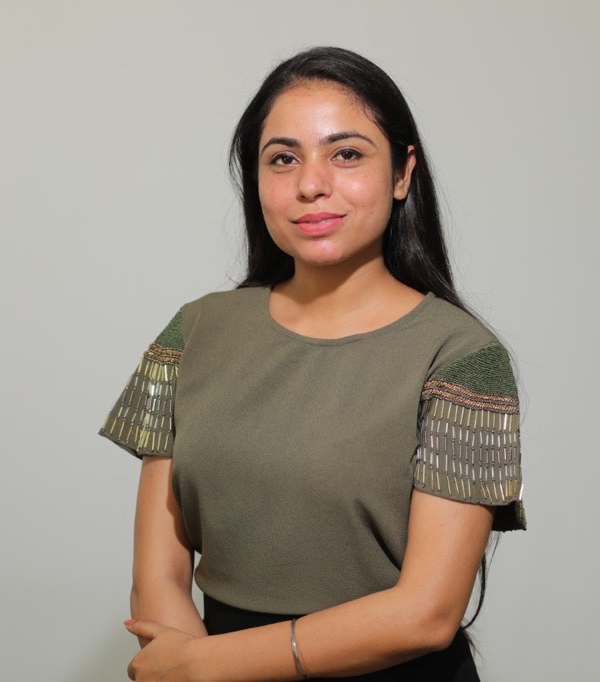Good Design is needed for better future
The future of design is likely to be shaped by a number of technological and cultural trends. Design trends will showcase...",

Harsh is an accomplished design-thinking thought leader. He leverages his design-led innovation expertise to develop business strategies rooted in deep human insights and drive significant business value. Over the last decade, he has successfully partnered with diverse organizations spanning various industries, such as technology, automotive, healthcare, hospitality, fintech, and architecture. He enjoys indulging in his passions for innovation and design-thinking [wespeakinnovation.com], travel photography, and movies.
Let us quickly get to our expert's point of view.
Let us quickly get to our expert's point of view.
Ans : When I think about the term 'design,' I think more about the design process than the outcome itself. It is the process of creating or planning with the intention of achieving a specific purpose, goal, or result. And the result can be in the form of a product, experience, service, strategy, or anything else. In the simplest of words, I think of design as an iterative process to solve problems.
Ans : In the most basic form, the design process consists of three phases: firstly, understanding the users (or stakeholders or audience), their values, aspirations, and challenges. Secondly, ideating and brainstorming potential solutions based on this understanding. Finally, developing and testing a prototype that embodies the chosen solution. While this framework provides a valuable structure, it is worth noting that design is a dynamic process that does not necessarily follow a linear path. And Regardless of where one begins, it is a highly iterative process that requires continuous reflection, refinement, and collaboration to achieve optimal results.
Ans : Working with people. As I mentioned previously, design is a dynamic process that thrives on collaboration with the stakeholders and users. It is through this collaborative mindset I find my flow and rhythm. While design can be an exciting and fun endeavor when working independently, the richness of the process becomes more pronounced when working within a team environment. From finding the foundation and rationale underpinning the solutions to finding the right solution and testing them, it is always better to involve the stakeholders and the users.
Ans : It is often assumed that intellect and imagination are distinct cognitive domains that are supposed to be cultivated independently. However, I see them as complementary and interdependent components of my thought system. Imagination can be fueled by intellect, and in turn, intellect can be enhanced by exploring the boundaries of one's imagination. Achieving a balance between these two aspects requires a commitment to continuous learning and critical reflection before applying your learnings. It is not very different from the design process itself - learn to make and make to learn.
Ans : Obtaining feedback is a critical aspect of any process, not only design, as it enables us to continuously adjust our approach and refine our solutions or outcomes. Positive feedback can serve as a motivational catalyst, affirming the efficacy of current practices, while negative feedback can shed light on areas that require improvement. This principle extends beyond professional contexts and can also be leveraged for personal growth.
Ans : I've been bitten by the travel bug in recent years, and it has been an adventure! Immersing myself in new environments, encountering diverse perspectives, and engaging with unfamiliar cultures and circumstances has been a tremendous source of inspiration.
Whether exploring a bustling city or getting lost in the wild, each experience brings unique learnings and sparks creativity for personal growth and creative exploration. And let's not forget about the fantastic people I've met along the way! Acclimating to new contexts and connecting with different folks has enhanced my ability to approach challenges with creativity, adaptability, and openness. I am thankful to my life partner, who is always ready to hit the road with me and start exploring!
Ans : It can be argued that design for problem-solving has existed for a while, but then it’s also a fact that it has traditionally been viewed as a specialized methodology used by specialists. In recent years, this approach has expanded to more general domains and even early education. This change represents a significant shift in how we have started to think about design. It presents a unique opportunity for designers to expand their impact and influence in a wide range of settings, including leadership across different industries in the public and private domains.
Ans :Nature. More specifically, humanity. And when I think of humanity, it is not just limited to human beings as a species; it is the simplest idea of doing good and acting with compassion and kindness. All this while recognizing its quirks because that ignites inspiration as well.
Ans : I discussed previously, it has become increasingly important for designers to adopt the perspective of the design process for problem-solving and evolve their practices with learning and reflection.
Another aspect of the importance of continuous learning is that it helps us stay relevant. Just as we update the software on our devices, we must apply the same approach to ourselves and stay informed about emerging tools and technologies.
Speaking of emerging technologies, artificial intelligence (AI) has been a hot topic in the design industry. Some fear that generative AI technologies such as ChatGPT, Bard, and Midjourney, among others, may render our work obsolete and eventually replace us. I believe that there's a different perspective that we should take. Rather than fearing the unknown, we should explore how we can harness AI to enhance our design processes and outputs.

Senior Consultant
Leave your details so we can contact you back.